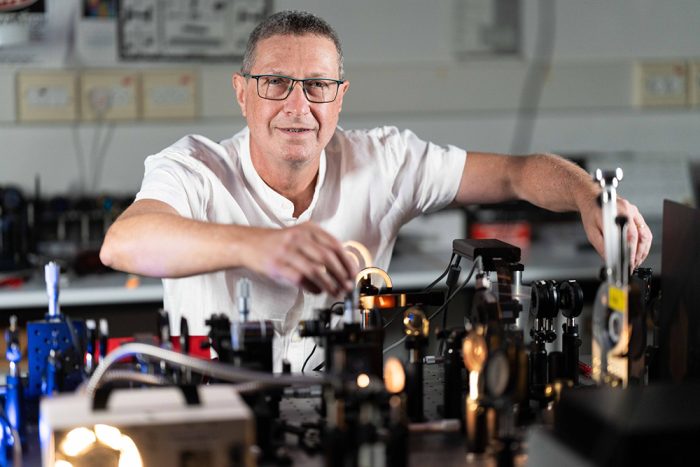The discovery, published in the journal Nature Materials, allows control of the spin of photons emitted from two-dimensional matter and paves the way for new photonic devices based on “atomic-scale spin-optics.”
The study was conducted by the research group of Prof. Erez Hasman, Head of the Nano-Optics Laboratory at the Technion’s Faculty of Mechanical Engineering, in collaboration with Prof. Elad Koren, Head of the Electronic Nanomaterials and Nanocomponents Lab at the Faculty of Materials Science and Engineering at the Technion, and Prof. Ariel Ismach of Tel Aviv University. The study was conducted and led by Dr. Kexiu Rong, a postdoctoral fellow from Prof. Hasman’s group, in collaboration with other researchers. The two Technion research groups collaborate through the Russell Berrie Nanotechnology Institute (RBNI) and the Helen Diller Quantum Center, both of the Technion.
Prof. Hasman said, “We achieved this objective by creating an effective magnetic field that separates and controls the spin states of the laser in these dimensions. It will not require another system – a strong magnetic field to generate it (such as the Zeeman or Faraday effect) and a temperature close to absolute zero, and creates a resonance with spin modalities and minimum loss.” This success paves new ways to create tiny laser devices that may help develop important applications.
“This prestigious publication demonstrates the importance of multidisciplinary research combining physics, chemistry, materials science and engineering, and the collaboration of international post-doctorate students in research groups,” added Prof. Hasman.
The study was supported by the Israel Science Foundation (ISF) and the RBNI Germ Program (research collaboration between the groups at the Technion). The components were implemented at the Sarah and Moshe Zisapel Nanoelectronics Center (MNFU) at the Technion.
To the full article on YNET >> (in Hebrew)







